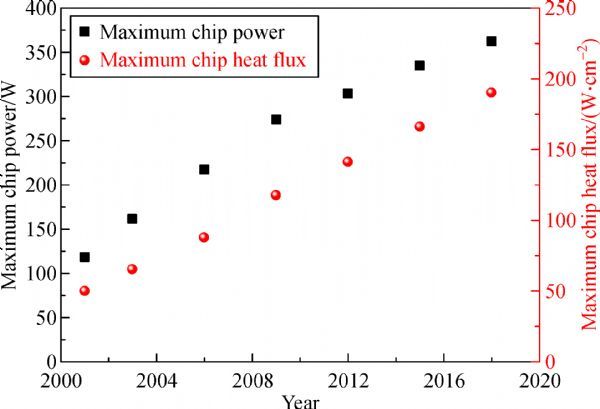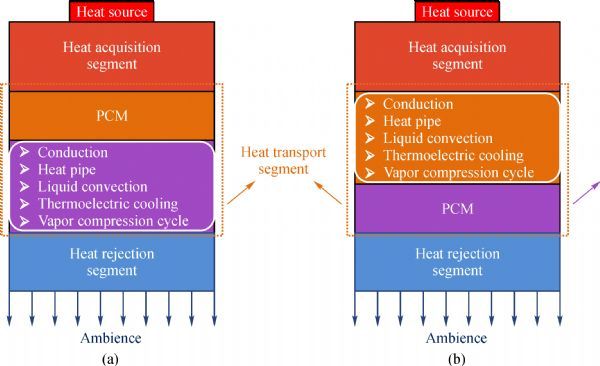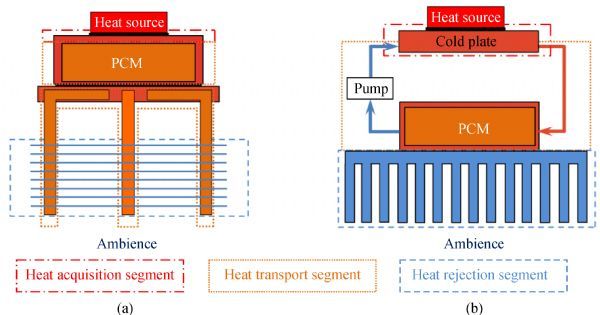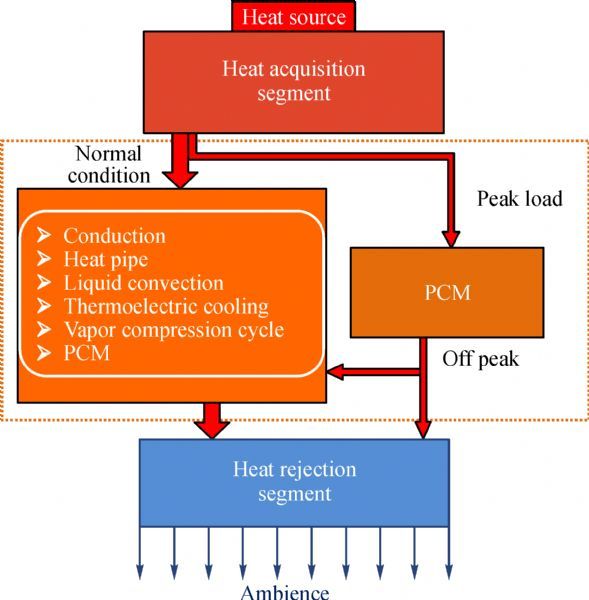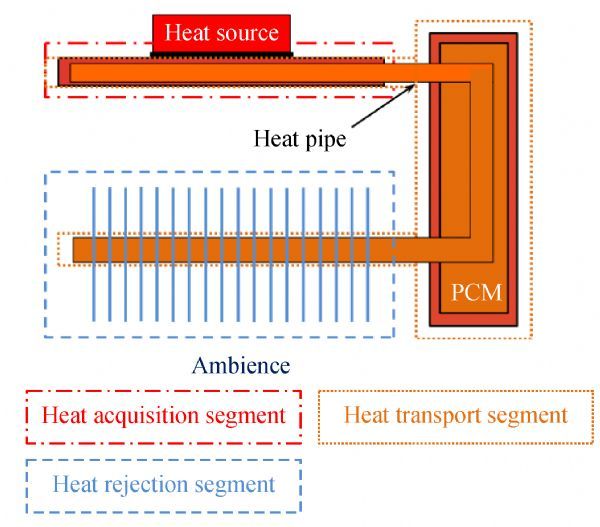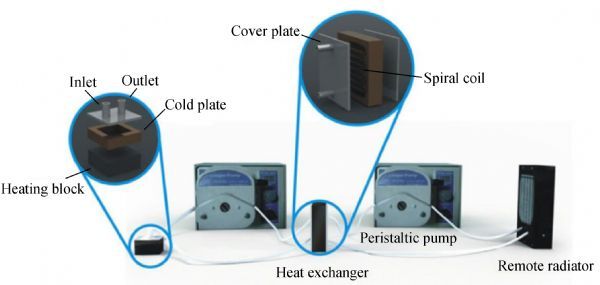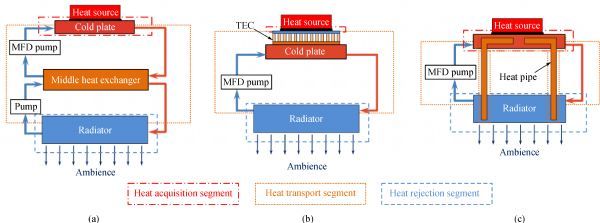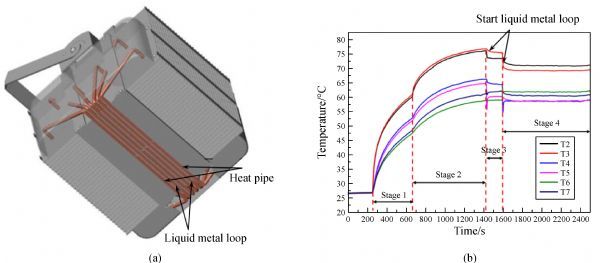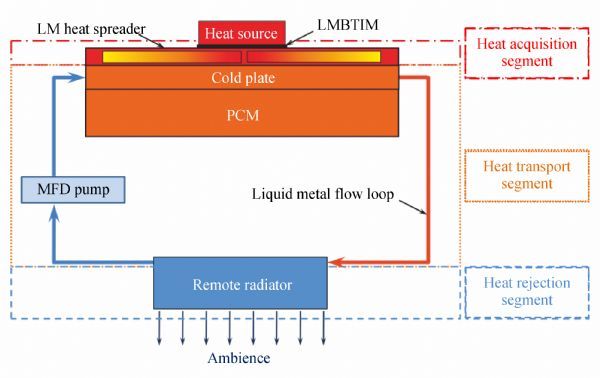Over the past few decades, Liu’s group continuously pushed forward liquid metal-based thermal management technologies and developed a series of cooling methods with different heat delivery strategies and concepts. In 2007, Ma and Liu [
32] demonstrated a cooling device which can harvest the waste heat of a computer chip to power a thermoelectric generator (TEG) and thus drive the flow of liquid metal to cool the chip. This cooling device consumes no external energy and operates silently. In the same year, Ma and Liu [
33] proposed the concept of nano liquid metal fluid combining high thermal conductivity nano particles with liquid metal, which suggested the fabrication of the ultimate coolant near room temperature with the highest thermal conductivity as a liquid in nature. In 2009, Deng and Liu [
34] built a prototype of a hybrid liquid metal-water cooling system for heat dissipation of high power density microdevices, which utilized liquid metal convection loop as the primary heat sink and water convection loop as the secondary heat sink, and thus reduced the use of the amount of liquid metal and greatly decreased the initial cost of the cooling system. To further advance this technology, Deng and Liu [
35] summarized the design and optimization principles for liquid metal cooling devices, especially the design of the MFD pump, and extended this technology to the field of cooling of high power LEDs [
36]. In 2012, Deng and Liu [
37] demonstrated the concept of a compact plate heat spreader based on room temperature liquid metal. Then, Luo et al. [
38] constructed a prototype of the blade heat spreader and tested its performance, which could effectively spread the heat from the heat source to the whole blade and thus eliminated the hotspot effect. In the meantime, Aqwest Inc. (USA), supported by the funding from US Air Force, started to develop liquid metal heat sink for high power diodes since 2009 [
39,
40]. They also used this technology for cooling of high power electronic chips in inverters for hybrid electric vehicles (HEV) and plug-in HEV (PHEV) [
41,
42]. Besides, liquid metal based micro/mini-channel heat sink was also gradually concerned and investigated [
43–
49].



